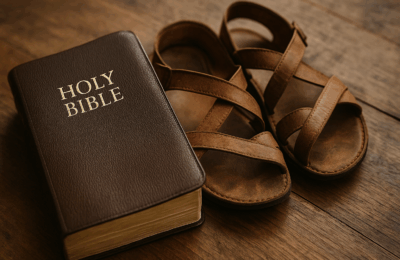Home | Bible Resources | Historical Books
2 Samuel: A Kingdom Rises and a King Falls
Introduction
2 Samuel records the rise of David’s monarchy as Israel’s greatest king and the establishment of the Davidic Covenant — a central pillar of redemptive history. What begins in triumph with God’s anointed king reigning in Jerusalem ends in tragedy, betrayal, and heartbreak. David’s life paints a deeply human portrait of spiritual highs and moral collapse, revealing both the strength of God’s covenant and the cost of sin. This book is not merely historical; it is profoundly theological — tracing the transition from tribal confederation to covenant kingdom. Through the rise and fall of David, we witness a foretaste of the Messianic King yet to come, whose throne will never fall.
1. Title, Author, and Date
Title Meaning: “2 Samuel” continues the narrative begun in 1 Samuel. In the Hebrew Bible, Samuel was a single book. The division into two parts came with the Septuagint. Although Samuel dies early in 1 Samuel, the books are named for him due to his pivotal role as prophet, priest, and kingmaker.
Authorship: Traditionally attributed to Samuel, Nathan, and Gad based on 1 Chronicles 29:29. The final form was likely compiled by a prophetic historian during or shortly after David’s reign.
Date: Likely written between 970–930 BC, during Solomon’s reign, with earlier materials drawn from court records and prophetic writings.
Historical Setting: The book covers David’s reign over Israel (circa 1010–970 BC), including his consolidation of power, covenant with God, and eventual personal and political unraveling.
Role in Redemptive History:
- Chronicles the establishment of the Davidic Covenant (2 Sam 7), which becomes a cornerstone for Messianic hope.
- Moves the redemptive story from tribal judges to a unified kingdom under God’s chosen ruler.
Book Stats:
Chapters: 24
Verses: 695
Approx. Word Count: 20,600 (LSB)
2. Purpose and Themes
Central Theological Purpose:
To demonstrate God’s sovereign establishment of David’s throne through covenantal grace, and to highlight both the consequences of sin and the certainty of God’s promise.
Major Doctrines Emphasized:
- Covenant Theology (especially the Davidic Covenant)
- Kingdom of God as rooted in a theocratic monarchy
- Divine sovereignty over human affairs
- Sin, repentance, and restoration in the life of God’s servant
Literary Features:
- Rich royal court narrative with military accounts, poetry (David’s songs), and prophetic oracles
- Structural arc follows rise → fall → consequences → closure
- Key chiasms (notably in David’s lament and covenant passages)
3. Outline
2 Samuel charts David’s anointed rule, marked by early success and divine favor, but shadowed by devastating personal sin and political fallout. Through it all, God’s promise remains unbroken — preparing the way for Christ.
I. David’s Rise and Rule over Judah (1:1–4:12)
A. David mourns Saul and Jonathan (1:1–27)
B. David anointed king over Judah (2:1–7)
C. Civil war with Ish-bosheth (2:8–4:12)
II. David Becomes King over All Israel (5:1–10:19)
A. David anointed king of all Israel (5:1–5)
B. Jerusalem captured and established as capital (5:6–25)
C. Ark brought to Jerusalem (6:1–23)
D. The Davidic Covenant established (7:1–29)
E. David’s military victories and administrative success (8:1–10:19)
III. David’s Sin and Its Consequences (11:1–20:26)
A. David’s sin with Bathsheba (11:1–27)
B. Nathan’s rebuke and David’s repentance (12:1–31)
C. Amnon and Tamar: dysfunction in David’s house (13:1–39)
D. Absalom’s rebellion (14:1–19:43)
E. Sheba’s rebellion and political fallout (20:1–26)
IV. Epilogue: Reflections on the Kingdom (21:1–24:25)
A. National crises and covenant faithfulness (21:1–22)
B. David’s songs and last words (22:1–23:7)
C. David’s mighty men (23:8–39)
D. David’s census and final altar (24:1–25)
Canonical Flow: 2 Samuel bridges the chaotic Judges era and the united monarchy under David. It sets the theological foundation for messianic kingship that echoes through the Psalms, Prophets, and the Gospels — where the “Son of David” brings ultimate restoration.
4. Key Themes and Theological Contributions
Creation → Fall → Redemption → New Creation Themes:
- Creation: Israel unified under God’s chosen king
- Fall: David’s moral failure mirrors Adamic fall
- Redemption: God’s covenant mercy remains, preserving the promise
- New Creation: Hints of a greater King to come whose reign will be eternal (2 Sam 7:13–16)
Typology & Christological Links:
- David as a type of Christ: anointed shepherd-king, suffering servant, covenant mediator
- The Davidic Covenant as messianic foundation (cf. Luke 1:32–33; Acts 2:29–36)
Covenant Faithfulness:
- God’s promises remain intact despite human failure (2 Sam 7; Psalm 89)
📌 Memory Verse: 2 Samuel 7:16 (LSB) — “And your house and your kingdom shall endure before Me forever; your throne shall be established forever.”
⚔️ Major Rebellions/Turning Points:
1. David’s Sin with Bathsheba
- Crisis: Lust, adultery, murder, and attempted cover-up
- Redemptive Trajectory: God disciplines His servant but does not revoke His covenant (12:10–14)
2. Absalom’s Rebellion
- Crisis: Internal family breakdown leads to civil war
- Redemptive Trajectory: David’s sorrow highlights messianic longing for a true King of peace (19:1–8)
3. The Census and Judgment
- Crisis: David’s pride leads to divine judgment on the people
- Redemptive Trajectory: Mercy shown at the threshing floor of Araunah — later the site of the temple (24:18–25)
5. Christ in 2 Samuel
Anticipation and Foreshadowing:
- David is a shadow of the Messiah: humble origins, Spirit-empowered leadership, covenant king
- David’s failures highlight the need for a sinless King
- The Davidic Covenant (2 Sam 7) directly foretells Christ’s eternal reign (cf. Isaiah 9:6–7; Luke 1:32–33)
New Testament Fulfillment:
- Christ as the true “Son of David” (Matt 1:1; Rom 1:3)
- Peter cites David’s tomb and prophecy to validate Christ’s resurrection and kingship (Acts 2:29–36)
Cross-Reference Chart (Recommended Visual):
| 2 Samuel | Fulfilled in Christ |
|---|---|
| 7:12–16 – David’s eternal throne | Luke 1:32–33; Acts 13:22–23 |
| David’s suffering and exile | John 1:11; Hebrews 13:12–14 |
| David’s songs of deliverance | Psalm 18; Romans 15:9 |
6. Historical and Literary Notes
Genre: Historical narrative with poetic interludes (e.g., chs. 22–23)
ANE Context:
- Royal inscriptions and covenantal language echo suzerain-vassal treaties
- Jerusalem’s selection and temple site foreshadow God’s permanent dwelling among His people
Theological Contributions:
- Theology of kingship and leadership
- The interplay of divine sovereignty and human responsibility
- Redemptive suffering and intercession
👤 Key Characters:
- David – Shepherd, warrior, king, sinner, psalmist
- Bathsheba – Woman caught in royal sin; later mother of Solomon
- Nathan – Bold prophet who confronts David
- Joab – Ruthless commander, fiercely loyal and morally complex
- Absalom – Charismatic rebel son, embodiment of betrayal
- Mephibosheth – Crippled son of Jonathan, recipient of covenant kindness
7. Applications for Today
Discipleship Formation:
- God calls flawed leaders to serve His purposes
- True repentance brings restoration but not always the removal of consequences
- Covenant loyalty matters in a world of compromise
Worldview and Ethics:
- Leadership must reflect holiness, not just charisma
- Sin impacts generations — but grace is greater still
- God’s promises endure even when His people falter
Leadership and Mission:
- Godly leadership requires humility, accountability, and trust in divine timing
- Justice and mercy must walk hand in hand
- The mission of Christ’s Church is grounded in a throne that cannot fall
8. Shoe Leather Discipleship Tie-In
This book shows us that God’s promises are not derailed by human failure. Through David’s triumphs and tragedies, we are reminded that God’s redemptive plan marches on — not because of man’s strength, but because of His covenant faithfulness. 2 Samuel invites us to trust the King who will never fall and to walk humbly, repentantly, and courageously in His shadow. In every failure, there’s an altar of mercy. In every longing, there’s a throne that awaits the rightful Son of David.







